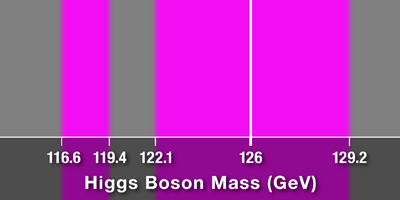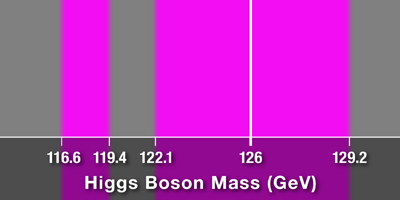Narrowing the Range of Possibilities
On 4 July 2012, two experimental collaborations at the Large Hadron Collider, ATLAS and CMS, reported the discovery of a new particle that appears to be the Higgs boson, though further measurements will be needed for confirmation. In Physical Review D, the ATLAS collaboration presents the techniques that were used in their experiments, as well as an analysis of all their data collected in 2011, which allowed them to exclude wide ranges of possible mass values for the Higgs boson.
The existence of the Higgs boson is a crucial test of the electroweak symmetry breaking mechanism of the standard model of particle physics (see 13 March 2012 Viewpoint), but its mass can only be determined experimentally. The rate at which high-energy proton-proton collisions will produce the Higgs boson and the rate of its decay to various other elementary particles are known for a given Higgs mass. However, other processes can produce the same final particles; this is referred to as background.
In 2011, the ATLAS collaboration searched for the Higgs boson in the mass range of – giga-electron-volts (GeV) in several decay channels, including decay to a pair of photons and decay to four leptons via a pair of bosons. By comparing their data with the expected background, the team was able to exclude wide mass ranges in which the Higgs boson could lie, leaving only two small windows between about and GeV. Furthermore, around a mass of GeV, their data show hints of a new particle compatible with being a Higgs boson at the level. – Urs Heller





